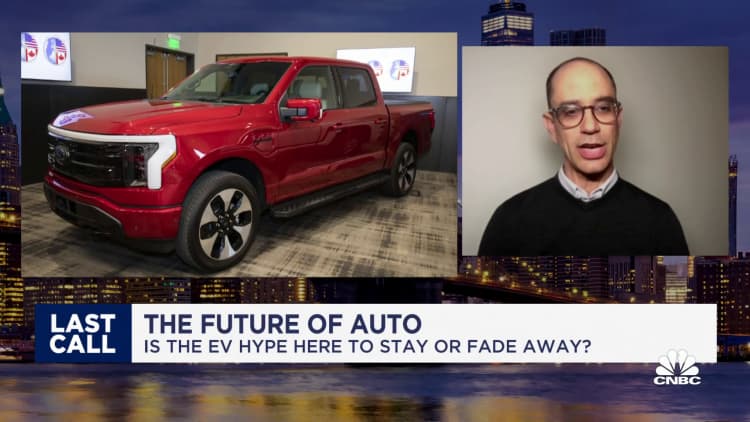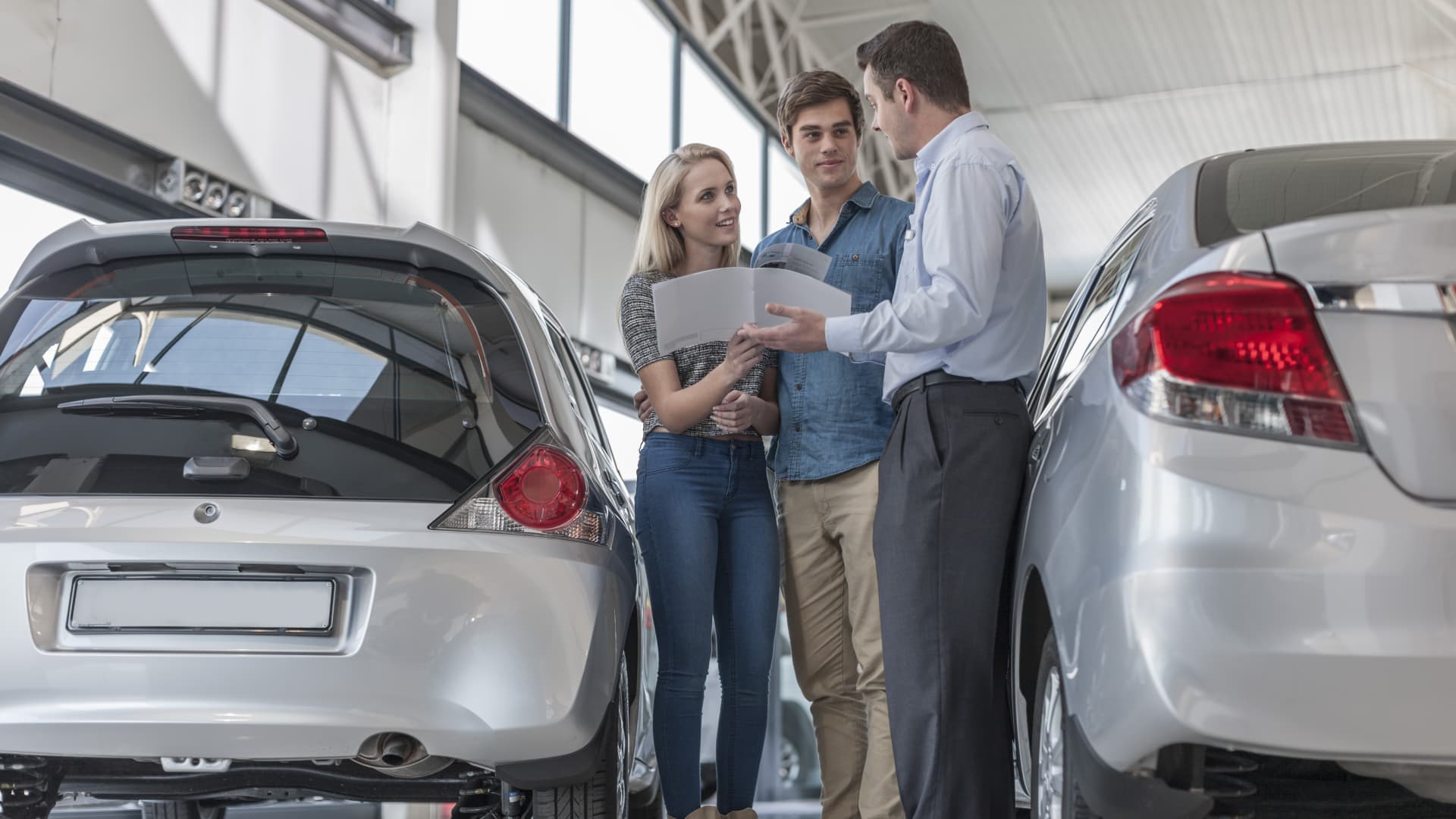Westend61 | Westend61 | Getty Images
Access to personal cars remains important to Americans despite the growing monthly cost of ownership.
The average monthly auto payment reached $733, a new record, in the second quarter of the year, according to a report by auto site Edmunds.
Seventy-eight percent of middle-income households earning between $47,000 and $142,000 rely on a vehicle to get to work, Santander Bank found in a new survey, and 74% are willing to make financial tradeoffs to maintain access to cars. For instance, 61% would give up dining out, while 48% would pass on vacations and 48%, entertainment.
More from Personal Finance:
New, used EV prices have dropped, but don’t rush to buy
Long Covid has led to financial hardship for patients, research finds
Don’t keep your job loss a secret — here’s how to talk about it
Almost half, or 48%, of the 2,213 survey respondents say they prioritize cost over practicality, comfort and performance when shopping for a new car, up from 37% who said so in pre-pandemic years. Factors such as maintenance and fuel costs are also being taken into account.
Despite high vehicle costs — pushed upward by record-high interest rates and inventory issues — Americans are finding ways to navigate the cost of buying.
Interest rates, inventory issues add to costs
The overall cost of purchasing a car is increasing in part due to interest rates, said Tom McParland, contributing writer for automotive website Jalopnik and operator of vehicle-buying service Automatch Consulting.
Back then, however, the auto industry didn’t have the same inventory problems.

“There were discounts in 2007 and 2008 because cars [were] just sitting on the lot, and now we don’t have cars on the lot,” said Joseph Yoon, a consumer insight analyst for Edmunds. “That’s really contributing to overall really high costs for consumers.”
While some car manufacturers are improving their supply deliveries, inventory wrinkles are still far from being ironed out, experts say.
“When you start drilling down the vehicles that are in demand, that’s where [you] start to see a different texture,” said McParland.
How some drivers are trimming monthly payments
As interest rates and inventory spur price hikes, some car shoppers are either lengthening their loans or — if they have the money and means to do so — making a more generous down payment.
The average duration of car loans is stretching ever longer. Before the pandemic, the average length was 5 years, Yoon said. Consumers are now more apt to sign 72- to 84-month loans, equating to six or seven years in repayment.
“If you have to have a car and your budget is limited, what people are doing is just pushing out the loan terms,” which reduces the monthly payment, he said.
Yet, a longer loan is not always ideal. A longer repayment term means you’re paying more for the car overall. Additionally, cars depreciate in value, so there’s a chance you will owe more than the car is worth. It’s important to keep this in mind, especially if you get into an accident that totals the vehicle, or can’t keep up with payments.
‘The math on leases isn’t good’
For some drivers, leases were once considered a smart way to score a new vehicle for less because you would pay for the depreciation of the vehicle only for that period. However, for a lease to be ideal, you need three elements in your favor: The residual value of the vehicle after the lease expires needs to be high, you need solid discounts, and interest rates have to be low, said Yoon.
Three to four years ago, a customer could walk into a lot and lease a luxury sedan for $300 a month, but these days dealers are rarely offering discounts and interest rates are astronomical, he added.
You are going to have a larger chunk of people with loan payments in the four figures.
Tom McParland
operator of Automatch Consulting
However, a large portion of customers who would have leased luxury cars are now buying them and agreeing to pay about $1,000 a month instead, “because the math on the leases isn’t good,” said McParland.
“If you have a large chunk of the consumer pool who would normally lease a luxury car that retails for $60,000 or more now deciding to finance that car instead, you are going to have a larger chunk of people with loan payments in the four figures,” added McParland.
The share of car buyers who financed a vehicle with a monthly payment of $1,000 or more climbed to a new record high of 17.1% in the second quarter, Edmunds found.
“Consumers who are paying large amounts of finance charges could be in jeopardy of falling into a negative equity trap,” wrote Ivan Drury, Edmunds’ director of insights, in a statement.
Some would-be buyers are simply waiting it out
Even though demand for vehicles persists, some customers are waiting for the prices to cool down.
While 24% of survey respondents delayed purchasing

